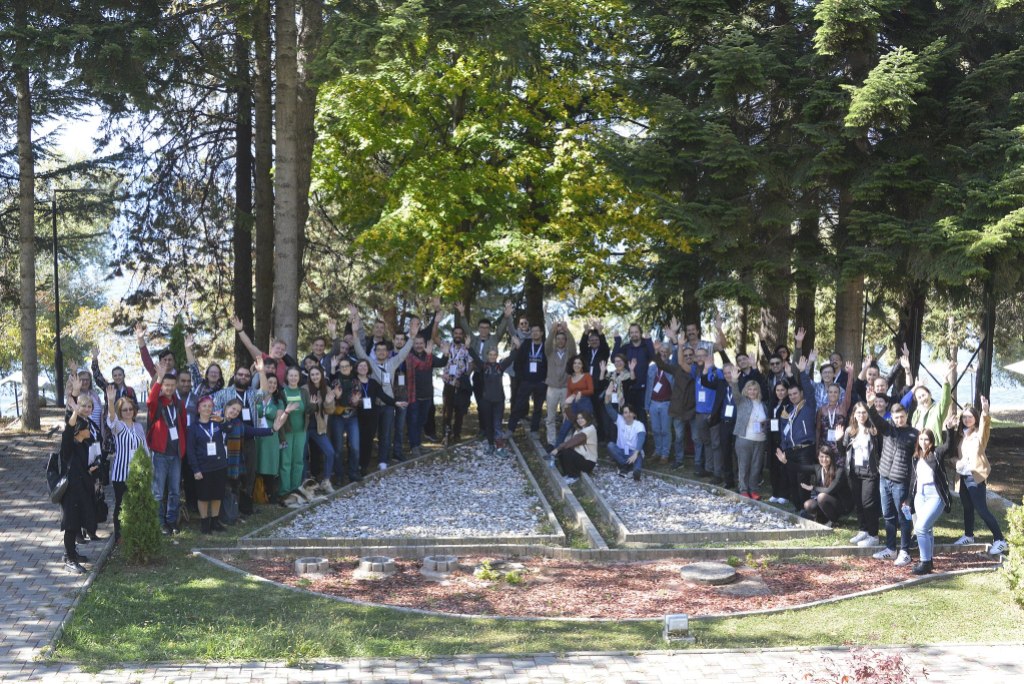A woman quit her job as a make-up artist and opened her own rescue centre – which is home to more than 180 disabled farm animals. Amanda Clark, 33, runs the Here With Us Sanctuary with husband Steve, 35, where they care for animals including sheep, cows and pigs, many of which have special needs. The animals with disabilities include birds with missing toes, ducks with neurological conditions and goats with prosthetic limbs. All 180 animals have been rescued – including cows from dairy farms, battery farmed hens and pigs who were saved on their way to an abattoir. The vegan couple were inspired to rescue farm animals after visiting a sanctuary in New York in 2017 and Amanda knew it was her “calling”. Their non-profit sanctuary is run by the help local volunteers, the youngest one being their nine-year-old son, Fin, who loves mucking in with the animals. Amanda, a former make-up artist, from Pennsylvania, USA, said: “Our mission is to provide a safe and loving home to farm animals who have been abused and neglected. “I never grew up on a farm so it’s been all new to us. “I really want to show people that these animals are just like people with feelings and emotions. “They are all individual, sentient beings that deserve compassion and a happy life. “I’ve always loved animals and have been a vegetarian since school. “But after seeing the amazing work of the sanctuary, I knew I that’s what I wanted to do. “We were so touched by their stories we literally became vegan overnight.” The first animals they rescued were two goats called Patrick and Darby in July 2017 FROM WHERE– both are still with them today. At the time, the couple were living in a built-up neighbourhood, so Amanda’s brother Tommy and wife, Corrien, allowed them to fence in a portion of his back garden to house the goats. Next, a friend told them about about four hens – Tofu, Happy, Peanut and Peg – who needed to home. Despite not allowing chickens, Amanda and Steve, a machinist, built a makeshift coop in the back garden for them. They were determined to keep rescuing animals and started looking for more space – first moving to a place in York County, Pennsylvania, before outgrowing the land. In March 2019, the couple moved to Shermans Dale, Pennsylvania, where they continued to build more fences and pens and now home 180 different farm animals at Here With Us Sanctuary. Amanda said: “The day we moved in, we got a cow fence installed for two rescues – Ronnie and Reggie. “I just knew it was what I wanted to do, and I quit my job as a make-up artist to care for the animals full-time.” All of the farm animals are rescued and many of them have special needs that Amanda has learnt to cater since opening the sanctuary. Amanda’s day involves waking up at around 7am to feed to the outside animals for a couple of hours and then back into the house to care for the disabled ones. Some of the animals including three ducks called Tuck, Cheerio and Dandy, all of which suffer neurological disorders and are wheelchair bound. The most recent to join was a female cow, Vasana and her calf, Wilbert, who were two days away from being slaughtered. Amanda said: “Some are from cruelty cases, and some were found abandoned and bought to us. “A lot have been rescued from the farming industry or just before being slaughtered for meat. “I have never cared for disabled animals before but it’s just something we’ve learnt on the way. “Diesel the rooster was surrendered to us with mobility and ‘anger’ issues – but he has never shown any aggression. “It just goes to show all of these animals deserve love and patience.” Here With Us became a registered non-profit Charity in 2019 and is completely donor funded with 10 to 12 volunteers helping out some days. They have built huge social media fan-base with 20.1k followers keeping up with the day-to-day happenings at the sanctuary. Amanda continues: “Giving these animals a loving home is the most rewarding job. “Steve still works full-time but him and Fin are such a great help – they’re just as involved. “We want to try and close the disconnect between these sentient beings and what people put on their dinner plates. “All of the animals have feelings and emotions – just like people. “The Sanctuary has been four years in the making and I couldn’t imagine myself doing anything else.”


